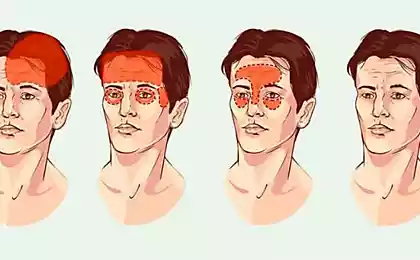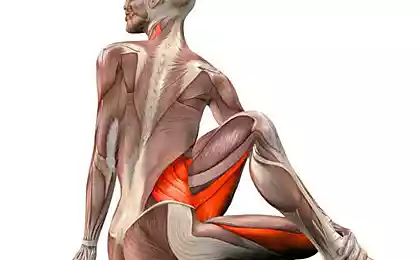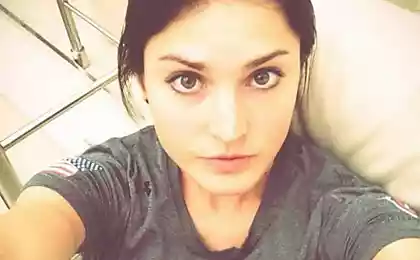509
Special exercises for pain in lower back
Back pain is a very common problem people involved in fitness. It prevents them not only in the gym but also outside of training: Pain is not allowed to freely move, which greatly reduces the urge to exercise, but in such cases the main thing – not to lose hope.

The cause of the pain can not be failing health and too weak back muscles and the press.If the doctor confirmed that the cause of the pain became burden on undeveloped back muscles, it is important to form your own training program. It is necessary to pay special attention to the abdominal muscles, hyperextension and wide. After some time, the possible increase in pain, but by doing things methodically and accurately, the pain will soon subside. Many people in solving this problem helped exercises, develop stretching, strengthening the press and the gluteal muscles.
Often the main cause of lower back pain is a weak press, which, among other things, negatively affects the posture. Because of this, the main burden falls on the muscles of the back, the balance is disturbed, discomfort, pain, and even spasms in the spine. Therefore, without a good press should not count on good posture.
Pathogenesis
Reported to lower back pain test at least once in your life 85-90% of people. Its frequency in athletes, as seen from the reports, is 1-30%, and this is one of the most frequent causes of temporary disability in professional sports. Unfortunately, athletes rarely get down to the cause of the pain. Usually it is due to the stretching of the muscles, and, as a rule, this diagnosis is as for acute and chronic low back pain.
Prevention
Prevention of stretching of the lumbar muscles and ligaments is to increase the flexibility of the lumbar spine. It is believed that this improves the portability heavy load and prevents the attacks of pain in the lower back. To prove a clear link between flexibility and lower back pain has not yet succeeded, but most experts agree that athletes are not flexible enough to have more chances of trauma to the stretching of the lumbar muscles. With regard to prevention of stretching during the competition, probably, it is important to choose the warm-up. Warm-up warms the body, improves blood flow to the extremities, increases flexibility and thus prevents injury. Stretching the muscles of the extremities is associated with poor warm-up, with weakness, with poor flexibility and muscle fatigue. Recently, it was shown that the flexibility achieved during the warm-up, completely disappears during the 30-minute rest before the competition. The relationship between the degree of rigidity and risk of damage to the lumbar is still unclear, however, maintain athlete of the active form immediately before the game and before coming on as a sub should help to reduce the risk of muscle strain.
Finally, a history of lower back pain — the most accurate prognostic factor of the occurrence of back pain in the future. The risk of attacks is 3 times higher in athletes who back pain than pleasure, that pain is not experienced. The proposed program of physical therapy to strengthen the muscular system — muscle tone of the body, however, there is no conclusive evidence that it reduces the incidence of back pain in athletes. Probably the best preventive tool is in good shape and technology combined with the right workout.
Each person has back pain felt in different ways, therefore it is always worth to talk about this with your doctor to jointly decide on how to solve this problem efficiently and quickly. If this is due to untrained muscles, in this case, can help a complex of exercises presented below.
Leg raises lying down
Starting position: lying face down.
Should be possible to strain the muscles of the right leg, raise it up 30 degrees. To raise the foot need with the voltage, but discomfort in the lower back should be avoided; to tear the thigh from the floor with the whole foot also can not. After the climb I count to ten and return your leg to the starting position. Then repeat the same thing, but with the left leg. If this exercise seems too difficult, you can slightly bend the knees when it is executed. This exercise strengthens the legs and reinforces the lower abs.
Squats with support on the wall
Starting position: standing, resting against the wall with his back, feet slightly wider than shoulder width.
From this position it is necessary to perform a partial squat (to angle the legs were about 90 degrees), counting to five, return to starting position. To perform 5 times. This exercise develops the latissimus dorsi, thigh and calf muscles.
Partial lifts of the torso from a prone position
Starting position: lying on your back, slightly bending knees, straighten the arms along the trunk.
You need to gradually raise your head with your shoulders touch the knees. For a short time to harden in this position, counting to 10-year, return to the starting position. Perform 5-6 times. This exercise strengthens the upper abs.
Leg lifts back in the standing position
Starting position: standing, feet shoulder width apart, leaning on the back of a chair.
Gently pull the right leg back and up, always keeping it straight. Then slowly return it to starting position. To repeat with the left leg. Exercise 5-6 times on the leg. This exercise strengthens the legs and back.
Stretching exercise back muscle
Starting position: lying on your back, slightly bending your knees freely with her hands.
From this position, you need to draw up to his chest, pressed them, helping himself with his hands. This is not to raise his head. When you return to the starting position can't straighten out his knees. Perform 2-3 sets a day 5 or more times.
Finally I want to note – beginners are often confused muscle pain after exercise and pain that is described in this article. Despite similar feelings, the cause of pain in these cases is different. Faster than dealing will be able to understand the differences, the less pain he will receive in the future, as you will be able to avoid dangerous situations.
P. S. And remember, only by changing their consumption — together we change the world! ©
Source: vk.com/sport_stat?z=photo-25740422_371941251%2Falbum-25740422_00%2Frev

The cause of the pain can not be failing health and too weak back muscles and the press.If the doctor confirmed that the cause of the pain became burden on undeveloped back muscles, it is important to form your own training program. It is necessary to pay special attention to the abdominal muscles, hyperextension and wide. After some time, the possible increase in pain, but by doing things methodically and accurately, the pain will soon subside. Many people in solving this problem helped exercises, develop stretching, strengthening the press and the gluteal muscles.
Often the main cause of lower back pain is a weak press, which, among other things, negatively affects the posture. Because of this, the main burden falls on the muscles of the back, the balance is disturbed, discomfort, pain, and even spasms in the spine. Therefore, without a good press should not count on good posture.
Pathogenesis
Reported to lower back pain test at least once in your life 85-90% of people. Its frequency in athletes, as seen from the reports, is 1-30%, and this is one of the most frequent causes of temporary disability in professional sports. Unfortunately, athletes rarely get down to the cause of the pain. Usually it is due to the stretching of the muscles, and, as a rule, this diagnosis is as for acute and chronic low back pain.
Prevention
Prevention of stretching of the lumbar muscles and ligaments is to increase the flexibility of the lumbar spine. It is believed that this improves the portability heavy load and prevents the attacks of pain in the lower back. To prove a clear link between flexibility and lower back pain has not yet succeeded, but most experts agree that athletes are not flexible enough to have more chances of trauma to the stretching of the lumbar muscles. With regard to prevention of stretching during the competition, probably, it is important to choose the warm-up. Warm-up warms the body, improves blood flow to the extremities, increases flexibility and thus prevents injury. Stretching the muscles of the extremities is associated with poor warm-up, with weakness, with poor flexibility and muscle fatigue. Recently, it was shown that the flexibility achieved during the warm-up, completely disappears during the 30-minute rest before the competition. The relationship between the degree of rigidity and risk of damage to the lumbar is still unclear, however, maintain athlete of the active form immediately before the game and before coming on as a sub should help to reduce the risk of muscle strain.
Finally, a history of lower back pain — the most accurate prognostic factor of the occurrence of back pain in the future. The risk of attacks is 3 times higher in athletes who back pain than pleasure, that pain is not experienced. The proposed program of physical therapy to strengthen the muscular system — muscle tone of the body, however, there is no conclusive evidence that it reduces the incidence of back pain in athletes. Probably the best preventive tool is in good shape and technology combined with the right workout.
Each person has back pain felt in different ways, therefore it is always worth to talk about this with your doctor to jointly decide on how to solve this problem efficiently and quickly. If this is due to untrained muscles, in this case, can help a complex of exercises presented below.
Leg raises lying down
Starting position: lying face down.
Should be possible to strain the muscles of the right leg, raise it up 30 degrees. To raise the foot need with the voltage, but discomfort in the lower back should be avoided; to tear the thigh from the floor with the whole foot also can not. After the climb I count to ten and return your leg to the starting position. Then repeat the same thing, but with the left leg. If this exercise seems too difficult, you can slightly bend the knees when it is executed. This exercise strengthens the legs and reinforces the lower abs.
Squats with support on the wall
Starting position: standing, resting against the wall with his back, feet slightly wider than shoulder width.
From this position it is necessary to perform a partial squat (to angle the legs were about 90 degrees), counting to five, return to starting position. To perform 5 times. This exercise develops the latissimus dorsi, thigh and calf muscles.
Partial lifts of the torso from a prone position
Starting position: lying on your back, slightly bending knees, straighten the arms along the trunk.
You need to gradually raise your head with your shoulders touch the knees. For a short time to harden in this position, counting to 10-year, return to the starting position. Perform 5-6 times. This exercise strengthens the upper abs.
Leg lifts back in the standing position
Starting position: standing, feet shoulder width apart, leaning on the back of a chair.
Gently pull the right leg back and up, always keeping it straight. Then slowly return it to starting position. To repeat with the left leg. Exercise 5-6 times on the leg. This exercise strengthens the legs and back.
Stretching exercise back muscle
Starting position: lying on your back, slightly bending your knees freely with her hands.
From this position, you need to draw up to his chest, pressed them, helping himself with his hands. This is not to raise his head. When you return to the starting position can't straighten out his knees. Perform 2-3 sets a day 5 or more times.
Finally I want to note – beginners are often confused muscle pain after exercise and pain that is described in this article. Despite similar feelings, the cause of pain in these cases is different. Faster than dealing will be able to understand the differences, the less pain he will receive in the future, as you will be able to avoid dangerous situations.
P. S. And remember, only by changing their consumption — together we change the world! ©
Source: vk.com/sport_stat?z=photo-25740422_371941251%2Falbum-25740422_00%2Frev























